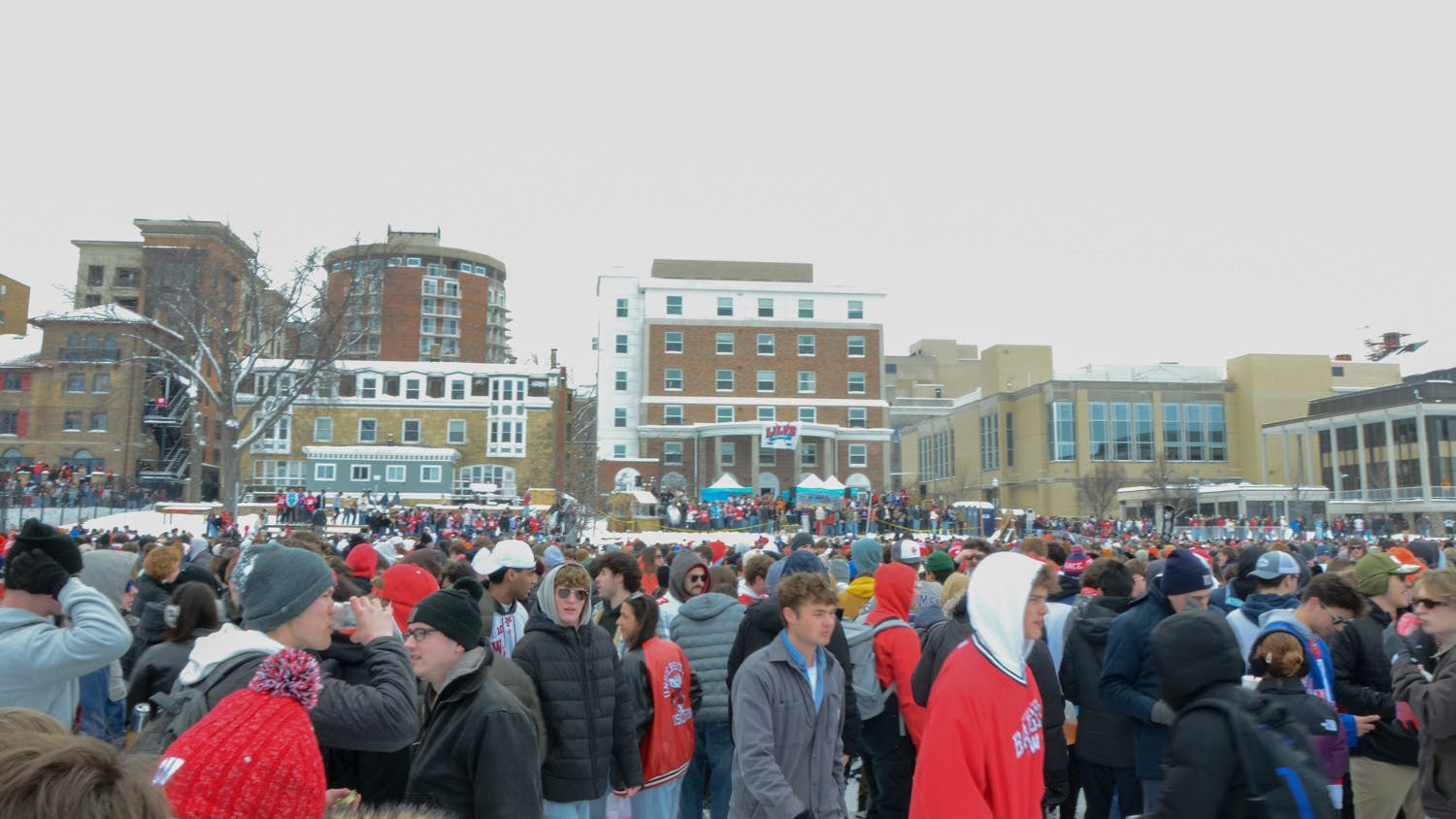Some people just love winter. They sled on lunch trays, play a little ice hockey and build snowmen bearing a resemblance to Bucky Badger. They love snowball fights. They even enjoy bundling up to walk to class when it is minus 10 degrees. Yet somehow, they make you want to shove them into a snow bank.
Oversleeping, quickly getting irritated and even occasionally freaking out at a winter-loving roommate is not uncommon. For many UW students, spending the majority of the school year in winter's darkness takes its toll. But there might be an excuse for those ""winter blues"" after all—they could be a form of depression called Seasonal Affective Disorder.
First proposed in 1984 by Dr. Norman E. Rosenthal, SAD is a form of winter depression affecting healthy people because of the lack of light during the winter.
""It affects everyone ... but I think most people who do have it are normally mentally healthy people who just don't do well when winter comes,"" said Alex Robles, a UW-Madison sophomore who has had SAD since her freshman year in high school. Robles also is affected by anxiety, and said she feels the effects of SAD more because of it.
Nate Tefft is a fourth-year graduate student in economics studying how depression and SAD relate to unemployment. According to him, the decreased amount of light on winter days can affect a person's circadian rhythms, or how a person's body works within a 24-hour period. Because there is more darkness during the winter, the body produces a hormone called melatonin and too much of it can slow a person down.
""It's like feeling continuous jet lag,"" Tefft said. Robles added she enjoys things less and gets irritated more often when she goes through SAD.
While the symptoms are generally similar to depression, Tefft said people affected by SAD tend to actually sleep and eat more than normalA-—the opposite of traditional depression. He added SAD is not considered a disease but rather a disease ""modifier"" because it is caused by seasonal changes.
Typically, an individual starts to feel depressed in the fall when the daylight starts to lessen, then returns to normal health in the springtime. Tefft also said people living near the equator are rarely diagnosed with SAD because the higher latitudes have more dramatic changes of light when winter comes.
Dr. Jeff Anders, clinical assistant professor of psychiatry at University Health Services agreed. He said the disease has nothing to do with temperature or the cold, but mostly the amount of sunlight available. Nationwide, 15 to 25 percent of people have mild seasonal mood changes, and 10 percent have full-blown SAD. Tefft also added that SAD generally occurs in any age after puberty because children do not have as many hormones as adults. Studies have found the disease to be more common in women than men, but have not found any conclusive evidence as to why.
Yet the majority of people affected by SAD, especially students, do not identify it, said Bob McGrath, director of counseling and consultation services at UHS. He said most students think they are feeling normal school-related stresses, when in reality they are affected by something that can be treated.
Though SAD can be treated with anti-depressants such as Prozac and Zoloft, the most successful and popular treatment is simple: light. McGrath said for students, ""just having to walk from class to class outside is good enough, but for others their life is basically indoors."" For them, he suggested a light treatment using special lamps.
UHS provides these lamps for students to check out or use at their offices, or they can be purchased for $100 to $200. The lamps use special bulbs mimicking the sun's light and are supposed to be used in the morning. To use, a patient simply sits in front of the lamp for a minimum of 30 minutes with it 12 inches away or less.
For Robles, she starts feeling the effects during her mid-term exams and Halloween and seeks treatment right away. She said she sits in front of the light for approximately one week and feels back to normal. Tefft said the lights stimulate the circadian rhythms and basically ""extend your day."" In other words, they replace the sunlight normally lost during the winter.
McGrath said the light treatment works best in the morning, before there is natural light outside, because your body will wake up and start its day like normal days that are longer.
He also said it takes very little time for a student to start experiencing longer days and feeling better. UHS generally sees students within one or two days of scheduling an appointment to do what is called an ""intake"" session to assess a student's needs. Within one week, they can begin a program and treatment, and those with SAD can start feeling better in as little as one week.
Robles said it is worth it to get help for SAD because the treatment is so simple. ""If you don't get treated it will keep bothering you. People think, ‘What's wrong with me? Am I going crazy?' but really it's just the winter and not your fault.""





